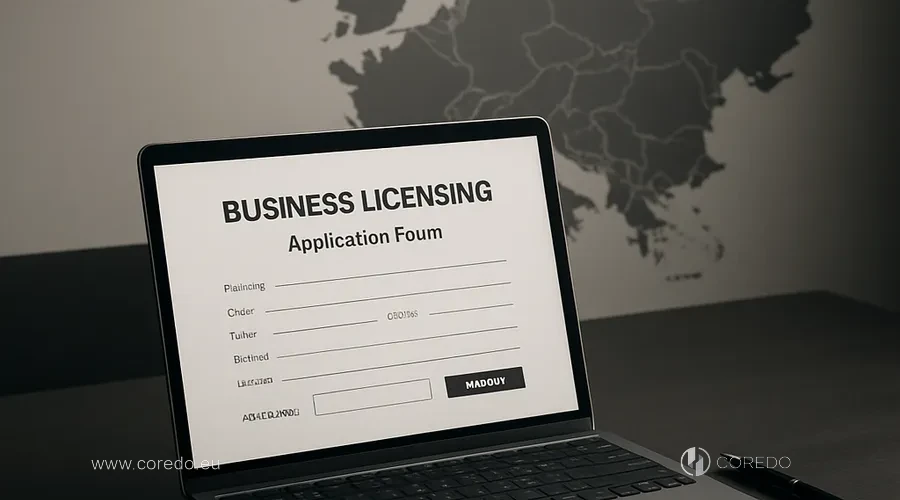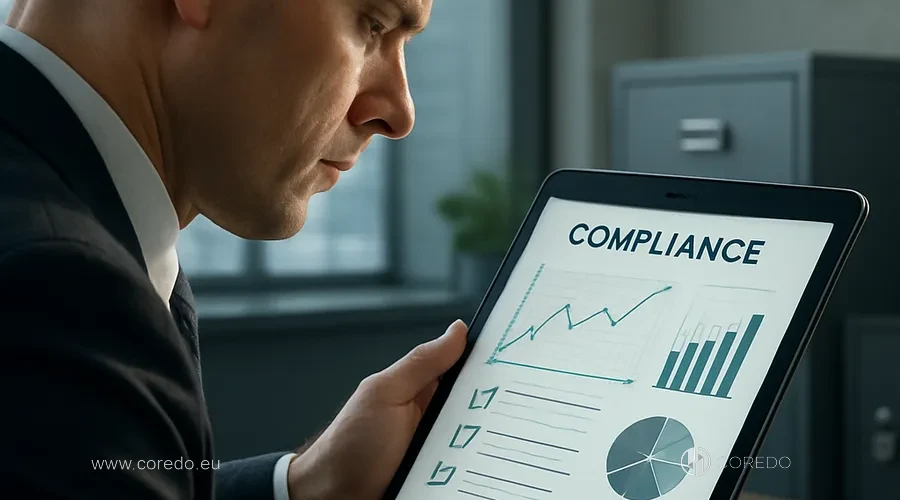In 2025, more than 70% of new fintech companies in Europe and Asia face licensing delays, losing up to 18 months of operational time and hundreds of thousands of euros on additional approvals and repeated reviews. Behind this dry statistic lies a fundamental problem: most entrepreneurs and finance directors do not understand how a bank license in the EU fundamentally differs from a financial license, what opportunities and restrictions they bring to a business, and how to choose the optimal scaling path amid strict regulation and growing competition.
Why can obtaining a license in Luxembourg take twice as long as in Lithuania? What minimum capital is required for an EMI, PI or a universal bank? What risks and AML compliance costs should be budgeted to avoid sanctions and account freezes? And finally, which type of license will realistically give your fintech startup access to cross-border payments, lending and integration with VISA and MasterCard?
Banking license in the EU: key features

A banking license in the EU is an authorization issued by a national regulator or the European Central Bank (ECB) that allows carrying out classic banking activities: accepting deposits, lending, opening accounts for individuals and legal entities, issuing bank cards and integrating with international payment systems.
Main requirements for a banking license
- Minimum share capital: for a universal bank: from EUR 5 million; for specialized banks (for example, in Lithuania), from EUR 1 million. Capital must be supported by transparent sources of funding and comply with capital structure requirements.
- Top management qualifications: members of the board of directors and executives are required to have experience in the banking sector, a proven reputation and no conflicts of interest. At COREDO we always recommend preparing a separate dossier for each candidate, including certificates of good standing and references from previous employers.
- Office and residency requirements: the bank must have a physical office in the licensing country, and key persons must be residents or hold long-term visas. For example, in the United Kingdom at least one director must be a resident of the country, and in Luxembourg: having a real office and staff is a mandatory requirement.
- Internal audit and control systems: mandatory presence of departments for internal audit, AML compliance, risk management and disclosure of accepted risks.
Regulatory bodies and supervision
- European Central Bank (ECB): supervises systemically important banks and coordinates the Single Supervisory Mechanism (SSM) within the EU.
- National regulators: in Germany – BaFin, in the United Kingdom, FCA and PRA, in Luxembourg – CSSF. Each authority applies its own requirements to capital structure, management qualifications and Due Diligence procedures.
- Single banking license in the EEA: allows, after obtaining a license in one EU country, to open branches and provide services in all countries of the European Economic Area without re-licensing.
Examples of countries with banking licenses
- United Kingdom: a flexible system for digital banks, but strict residency and capital requirements.
- Germany: a high capital threshold, strict BaFin supervision, popular for large international banks.
- Luxembourg: developed infrastructure for private banking and wealth management, but a lengthy licensing process and strict physical presence requirements.
Financial license and its types in Europe

Financial license covers activities not related to classic banking: electronic payments, issuance of electronic money, mobile wallets, integration with VISA and MasterCard, processing payments and settlements.
Main types of financial licenses
- EMI license (Electronic Money Institution): allows issuing electronic money, opening accounts for clients, integrating payment cards, but does not allow accepting deposits or granting loans.
- PI license (Payment Institution): permits providing payment services (transfers, acquiring, payments via mobile and digital wallets), but not issuing electronic money or opening full-fledged accounts.
EMI and PI licenses: differences
| Parameter | EMI license | PI license |
|---|---|---|
| Minimum capital | 350,000 euros | 20,000–125,000 euros |
| Opening accounts | Yes (but not bank deposits) | No |
| Issuance of electronic money | Yes | No |
| Lending | No | No |
| Integration with VISA/MC | Yes | Limited |
| AML compliance | Strict | Standard |
Licensing in EU countries
-
Lithuania: one of the fastest and most accessible jurisdictions for obtaining EMI and PI licenses, minimum capital 350,000 euros, review times from 3 to 6 months. A solution developed by COREDO for a fintech startup in Vilnius allowed the client to enter the market in 4.5 months, integrate payments with VISA and MasterCard and scale to 7 EEA countries.
-
United Kingdom: strict requirements for physical presence, mandatory office and residency of key persons, but a developed infrastructure for integration with international payment systems.
- Luxembourg: high entry threshold, lengthy due diligence process, but a prestigious jurisdiction for large fintech companies.
Banking license vs financial license in the EU
| Parameter | Banking license | Financial license (EMI, PI) |
|---|---|---|
| Minimum capital | from €5 million and above | EMI: from €350,000; PI — lower |
| Lending capabilities | Yes | No |
| Deposit-taking | Yes | No |
| Account opening | Yes | Limited |
| Regulation and supervision | ECB + national regulators | National regulators |
| International expansion | Single license in the EEA | Passporting in the EEA |
| E-money services | Yes | Yes |
| PSD2 applicability | Yes | Yes |
Key differences and business impact
How can I obtain a license in the EU?

licensing process in the EU: a step-by-step guide — a set of formal and practical stages that companies must go through to operate legally in the European market. At each step there are a number of general requirements for the applicant that directly affect the likelihood of license approval and further interaction with the regulator.
General requirements for the applicant
- Documents: founding documents, business plan, capital structure, information on beneficiaries, resumes and references for the management.
- Company structure: transparent corporate structure, presence of qualified directors and shareholders, absence of offshore elements.
- Management qualifications: proven experience in the financial sector, references, no criminal convictions and no conflicts of interest.
Specifics of obtaining a banking license
- Verification of funding sources: the regulator requires disclosure of all sources of capital, proof of the legality of the origin of funds, analysis of capital structure and financing plans.
- Due diligence: comprehensive check of all participants, internal control procedures, AML systems and risk management.
- Internal audit: mandatory internal audit department, regular checks and reports for the regulator.
Obtaining EMI and PI licenses
- Minimum capital: for EMI, €350,000; for PI, from €20,000 to €125,000, depending on the volume of operations.
- Office and physical presence: mandatory office in the licensing country, presence of staff, residency of key persons.
- Review timelines: in Lithuania, from 3 to 6 months; in the United Kingdom: from 6 to 12 months; in Luxembourg, up to 18 months.
- Documents: application, business plan, financial forecasts, description of IT infrastructure, AML procedures and internal control.
Which jurisdictions should I choose?
-
Luxembourg: high entry threshold, lengthy due diligence, strict requirements for physical presence, prestigious for private banking.
-
Lithuania: fast process, minimal capital, popular for fintech startups.
- United Kingdom: developed infrastructure, strict supervision, mandatory office and residency.
Regulation and compliance: AML, financial monitoring, risks

Regulation and compliance in the field of AML, financial monitoring and risk management are becoming key tasks for financial organizations amid tightening legislative requirements and the constant complication of money laundering schemes. Effective implementation of core requirements allows not only to minimize legal and reputational risks, but also to build transparent internal control processes.
Main AML and financial monitoring requirements
- AML requirements: mandatory implementation of customer identification (KYC) procedures, transaction monitoring, reporting of suspicious operations, and regular staff training.
- Financial monitoring: automated control systems, integration with national and international registers, disclosure of information about risks and procedures for managing them.
- Internal audit: regular inspections, reports for the regulator, independent assessment of the effectiveness of AML and risk management procedures.
Impact of PSD2 and other regulatory acts
- PSD2: an EU directive regulating payment systems, opens access to banks’ APIs, strengthens requirements for security, transparency and protection of customer data.
- Sanctions and fines: for non-compliance with AML and financial monitoring – fines of up to 10% of annual turnover, account freezes, license revocation, prohibition from operating.
Licensing of fintech startups in the EU

choice of license for a fintech startup determines not only the formal framework of the company’s operations but also opens up different scenarios for scaling the business in the EU. The specifics of regulation and licensing requirements in the European Union require startups to carefully choose between a banking license, an EMI and a PI — this choice determines the possible business model, time-to-market and the project’s future development.
Criteria for choosing a banking, EMI or PI license
- Business model: if the goal is lending and deposits, a banking license is required; for electronic payments, mobile wallets and issuance of electronic money: EMI; for acquiring and payment operations – PI.
- Capital costs: a banking license requires large investments; EMI and PI: minimal capital and a rapid market entry.
- Licensing speed: EMI and PI licenses can be obtained in 3–6 months, a banking license: from 12 to 24 months.
Examples of business models and licenses
- Payment platform: an EMI license is optimal, integration with VISA and MasterCard, issuance of electronic money, opening accounts for customers.
- Mobile wallet: EMI or PI license, fast launch, minimal capital requirements.
- Digital bank: banking license, access to lending, deposits, international expansion.
Cross-border expansion opportunities
- Passporting of licenses: after obtaining a license in one EEA country you can provide services in all countries of the area without re-licensing.
- Restrictions: for banks – practically none, for EMI and PI: restrictions on types of services and operational limits.
Minimizing costs and risks
Key findings and recommendations
Practical recommendations and key findings will help draw attention to the most important aspects of website optimization and facilitate the implementation of effective solutions. This section compiles the main differences in approaches and tips to consider for improving the site’s ranking and achieving stable results.
Summary of main differences and tips
- Banking license: for large projects with ambitions in lending and deposits, requires significant capital and a lengthy licensing process.
- EMI license, optimal for fintech startups, payment platforms and mobile wallets, minimal capital, fast time to market.
- PI license – suitable for acquiring, payment operations, integration with e-wallets.
Recommendations for licensing preparation
- Prepare a detailed business plan with financial forecasts, a description of IT infrastructure and AML procedures.
- Ensure a transparent capital structure and qualified management.
- Choose a jurisdiction with optimal requirements and review timelines.
Advice on AML and risk management
- Implement automated monitoring systems, train personnel, conduct regular internal audits.
- Disclose information about risks, integrate risk management procedures into operational activities.
How to choose a jurisdiction?
- Assess capital requirements, management qualification, review timelines and licensing costs.
- Lithuania: fast process, minimal capital, popular for startups.
- United Kingdom, developed infrastructure, strict supervision.
- Luxembourg – prestige, high entry threshold.
Appendices and FAQ
The “Appendices and FAQ” section was created to gather in one place structured supplementary materials and answers to frequently asked questions on the topic of licensing. Here you will find practical documents such as checklists for applying for an EMI/PI license, as well as clarifications on key stages and nuances of the process.
Document checklist for applying for an EMI/PI license
- Incorporation documents
- Business plan
- Financial forecasts
- Information on beneficial owners
- Management resumes
- Description of IT infrastructure
- AML and internal control procedures